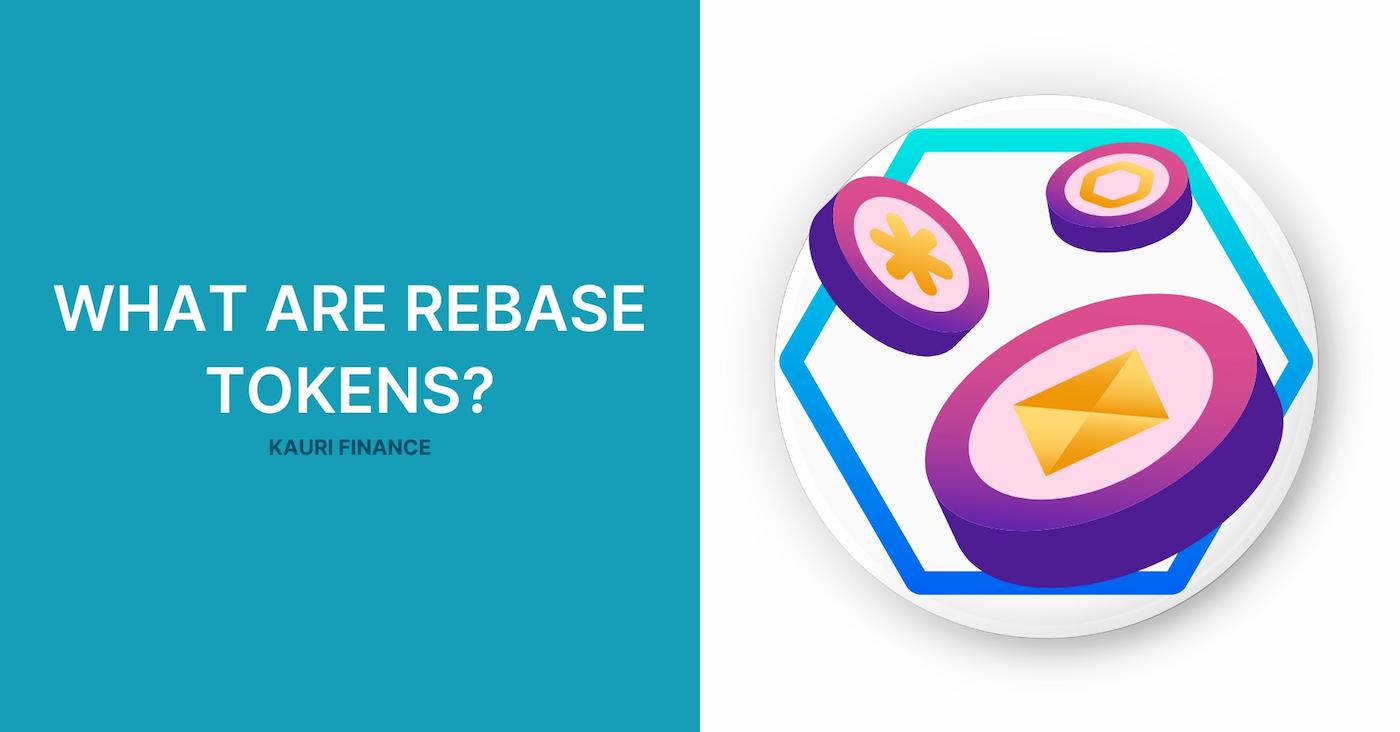
Understanding Rebase Tokens: How Do They Work?

Rebase tokens are a novel class of cryptocurrencies that automatically adjust their supply to stabilize their market value. Unlike traditional tokens with a fixed supply, rebase tokens dynamically change the number of tokens in circulation in response to market fluctuations. This mechanism aims to reduce volatility and maintain a target price, offering an intriguing alternative in the volatile cryptocurrency landscape. In this article, we will explore how rebase tokens work, their benefits, risks, and how they are integrated into platforms like Kauri Finance to enhance user engagement and financial stability.
What Are Rebase Tokens?
Rebase tokens are a unique type of cryptocurrency that adjusts its circulating supply automatically at regular intervals based on specific market indicators. This rebasing mechanism is designed to stabilize the token's price around a target value, which could be pegged to a fiat currency, another crypto asset, or any other value metric deemed suitable by the token's protocol.
Difference from Traditional Tokens:
Traditional tokens have a fixed supply set at the creation of the token. The price of these tokens is determined purely by market demand and supply dynamics without any inbuilt mechanism to adjust supply automatically. In contrast, rebase tokens can increase or decrease their supply dynamically. This supply elasticity helps mitigate the price volatility typically experienced by conventional cryptocurrencies, aiming to provide a predictable and stable valuation.
How Rebase Tokens Work?
The core functionality of rebase tokens is based on a mechanism that adjusts the token supply periodically. This is done by a smart contract that increases or decreases the number of tokens each holder owns, maintaining the market capitalization but changing the supply to move the market price towards a target price. These adjustments are made at regular intervals known as "rebases," which could occur daily, weekly, or as determined by the token's protocol.
Ampleforth (AMPL)
Ampleforth (AMPL) is a rebase token that aims to maintain its price close to the US Dollar but through supply adjustments rather than being a stablecoin with direct backing. When the price of AMPL is high relative to its target (say, $1.00), the protocol automatically increases the supply, distributing more AMPL to all holders proportionally, which theoretically should lower the price. Conversely, if the price of AMPL falls below the dollar mark, the supply contracts, reducing the number of AMPL in each holder's wallet, thereby attempting to increase the price per token.
This method leverages economic theories of supply and demand, hypothesizing that increasing supply will lower prices when demand remains constant, and reducing supply will raise prices under the same conditions. It's a sophisticated approach that combines elements of monetary policy typically seen in central banking with decentralized blockchain technology.
Benefits of Rebase Tokens
Rebase tokens are designed to offer a more stable price point, which is achieved through automated adjustments to the token supply. This price stability is crucial for users who need predictability in transactions, investments, and financial planning, reducing the risks associated with the high volatility typically seen in the crypto market.
The operations of rebase tokens are fully decentralized, governed by pre-set rules in their smart contracts, which execute automatically without the need for intermediary oversight. This enhances the efficiency of maintaining price levels, as the system does not require continuous monitoring or manual intervention by developers or a central authority.
Use Cases Where Price Stability Is Crucial
Price stability is essential in various financial applications:
- Payments: Stable prices ensure that both parties in a transaction are treated fairly, avoiding scenarios where the value changes significantly post-transaction.
- Loans: Stable collateral values allow for more predictable terms and reduce the risk of collateral liquidation due to price volatility.
- Trading: Traders can engage with assets without the typical risks associated with high volatility, making rebase tokens attractive for portfolio diversification.
Risks of Rebase Tokens
Despite the goal of price stability, rebase tokens can still experience periods of high volatility and price instability, especially if the market reacts unpredictively to the rebase mechanism or external market forces outweigh the rebasing effect.
- User Confusion Due to Complex Mechanisms: The mechanism behind rebase tokens can be complex and difficult for typical users to understand. Misunderstandings about how holdings can fluctuate with each rebase might lead to unexpected financial outcomes, causing confusion and potential dissatisfaction.
- Potential Smart Contract Vulnerabilities: Like any smart contract-based system, rebase tokens are susceptible to bugs or vulnerabilities in their code. Since these tokens automatically adjust their supply based on certain triggers, a bug could potentially lead to unintended dilution or contraction of token supplies, affecting all holders.
- Regulatory Uncertainties: The innovative approach of rebase tokens can lead to challenges in fitting within existing regulatory frameworks, which are primarily designed for more traditional financial instruments. Changes in regulations or interpretations can impact the operation, use, and broader acceptance of rebase tokens.
Examples of Rebase Tokens
Rebase tokens have varied implementations, each designed to address specific market needs or stability objectives. Here are some notable examples of rebase tokens that illustrate the range and diversity of this innovative financial instrument:
1. Ampleforth (AMPL)
Ampleforth is one of the most well-known rebase tokens. It aims to be a digital-asset-protocol for smart commodity-money. The AMPL token automatically adjusts supply in response to demand, with the goal of each unit's value pegging closely to the 2019 US Dollar, adjusted for inflation. These adjustments are done daily, directly into holders' wallets, which means the number of AMPL tokens a holder owns can increase or decrease based on the rebase algorithm's response to the token's exchange rate.
2. Yam Finance (YAM)
Yam Finance merges the rebase concept with decentralized finance (DeFi) yield farming. YAM seeks to maintain a peg to 1 USD, but what makes it unique is its additional feature of a decentralized governance system. Rebase mechanics not only adjust the supply of YAM tokens but also channel excess reserves into a treasury used for community initiatives and protocol improvements, decided through YAM holder voting.
3. Base Protocol (BASE)
BASE is another example where the token’s supply expands or contracts in response to the total cryptocurrency market cap. BASE’s supply adjustment aims to represent the entire crypto market's performance in a single token. If the total crypto market cap increases, BASE's supply increases proportionally, and vice versa. This provides investors with a novel way to speculate on the overall health and trends of the broader cryptocurrency market.
4. Olympus DAO (OHM)
Olympus DAO offers a rebase token called OHM that is slightly different due to its backing by a basket of assets. This gives OHM an intrinsic value that it can fall back on, which helps stabilize its price. Rebase rewards are given to stakers by diluting non-stakers, making it an attractive option for long-term holders willing to participate actively in the network's staking mechanisms.
Conclusion
Rebase tokens are an innovative response to the volatility in the cryptocurrency market, using automated supply adjustments to stabilize prices. These tokens, such as Ampleforth, Yam Finance, Base Protocol, and Olympus DAO, showcase diverse approaches to maintaining value stability, from pegging to currencies to mirroring market capitalization.
While promising, rebase tokens also pose risks like smart contract vulnerabilities and regulatory uncertainties, making thorough research and cautious investment essential. Platforms like Kauri Finance are crucial for providing the tools and education needed to navigate this complex landscape.
